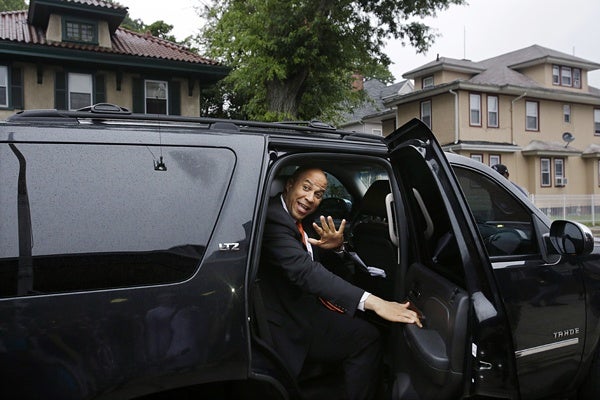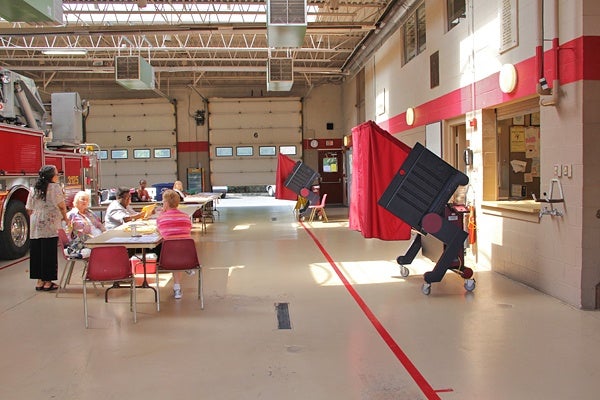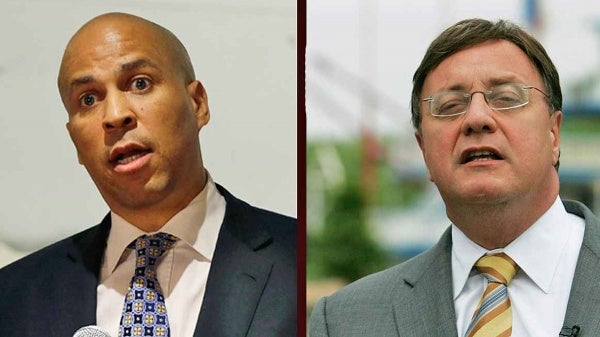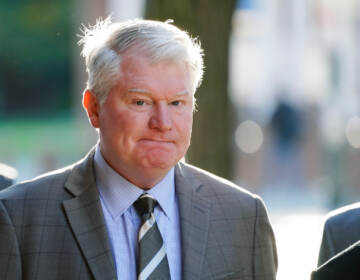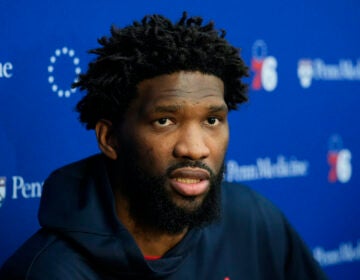U.S. Rep. Allyson Schwartz brings gubernatorial campaign efforts to Chestnut Hill
Eight people sat in Julie Gabis’ Chestnut Hill living room on a Sunday night earlier this month listened intently as U.S. representative and Democratic gubernatorial candidate Allyson Schwartz discussed everything from education to fracking.
After a short speech, Schwartz took the time to answer a few questions, although she didn’t take any from the group in Gabis’ living room.
Instead, the questions came from a few of those present at the other 37 houses participating in the night’s interactive “house parties” held by the Schwartz campaign. Located in 15 counties throughout Pennsylvania, each party was centered around the speech that Schwartz gave at one location that was streamed over the Internet to the other locations.
Gabis didn’t know four of the people in her living room before that night, but happily hosted the party in an attempt to expose new people to Schwartz.
“You have to be able to communicate with people and Pennsylvania is a big state,” she said. “It’s important for you to be able to reach out to people in lots of different ways.”
Newer technologies played a big part of the night’s house party campaign. Marc Stier, grassroots coordinator for the Schwartz campaign, said that more than 400 people heard his candidate’s message at the house parties.
New tools for old ideas
While the event was made possible by recent technological advances – cameras streaming live video through high-speed Internet connections – Stier said the methods used to promote a political campaign haven’t actually changed much in recent years.
“The key thing in all of this is not the technology,” he said. “If you’re doing issue work, it’s the cause. If you’re working for a candidate, it’s the candidate.
“If you can’t inspire people, technology doesn’t matter.”
He noted that the webcast was “a bit of a thrill,” but that the campaign volunteers who hosted the parties weren’t excited by the webcast itself but by “the fact we were doing it in 38 places around the state at the same time.”
The technology wasn’t perfect, either. Despite an instructional email from Stier that included pictures of cables and proper connections, two of the house parties never even saw the video due to technical issues. Still, one of the parties was very successful because an on-site “surrogate” was able to speak for Schwartz.
The more things change …
Stier was not surprised that they had a successful party at a location where the technology didn’t work. He added that 20 years ago similar strategies were used, but the events were organized with phone calls to the party hosts with a surrogate attending each party.
The process has become simpler and more time-efficient due to the Internet.
“The really important communal element is what really makes people committed to one another,” said Stier.
He later noted that “anything you do to show people that other people are taking part in an activity increases their commitment to it.”
While streaming video and e-mail blasts help, he said, “none of it can replace people sitting in a room with 15 or 20 other people.”
Mark Viola, a volunteer and field coordinator who has worked on several campaigns in Florida, said that the basic model for fundraising “hasn’t changed at all, it just has upgraded with the technology.
“You still have to raise as much as possible,” he said. “You still have to engage the donors, contact them directly, and convince them as to why it’s in their interest to support the campaign. You still have to have the candidate spend 80 percent of their time during the campaign contacting donors.”
The only big difference, according to Viola, is the ability to pursue low-dollar fundraising efforts.
“Two decades ago, there was a significant expense in time and resources to call or mail out fundraising materials, making low-dollar fundraising campaigns (asking for $5 from thousands of people) not cost effective,” he said. “With the ease of e-mail, social media and online donating, it is simpler now to engage in wide range small donor campaigns, without costing the campaign anything.”
No matter what the message or goal, however, both Stier and Viola described all the new tools provided by modern technology simply as new tools.
“Technologies help,” said Stier. “You touch people in a different way, but it’s not the technology that made it possible,” adding that there is no replacement for a firm handshake.
WHYY is your source for fact-based, in-depth journalism and information. As a nonprofit organization, we rely on financial support from readers like you. Please give today.


